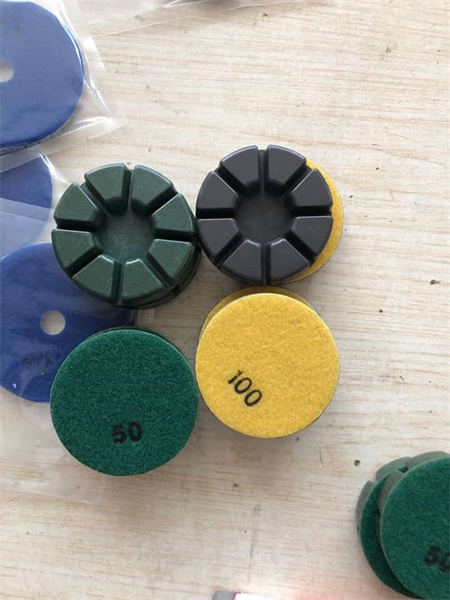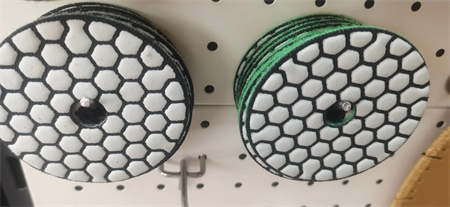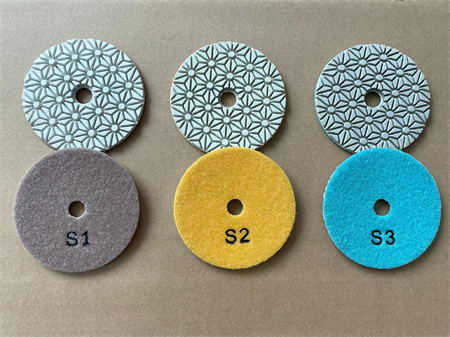Troubleshooting Common Problems with Diamond Polishing Pads
Diamond polishing pads are an essential tool in the world of stone, concrete, and marble finishing. Whether you’re a professional or a DIY enthusiast, these pads can help you achieve a flawless, high-gloss finish on a variety of surfaces. However, like any specialized equipment, diamond polishing pads can encounter issues over time, leading to less-than-ideal results. If you’ve found yourself struggling with inconsistent finishes, uneven wear, or other common issues, you’re not alone. Let’s take a closer look at the typical problems you might face with diamond polishing pads and how to troubleshoot them effectively.
1. Uneven Surface Finish
One of the most common complaints when using diamond polishing pads is an uneven or streaky surface finish. This problem often occurs when there is improper pad selection or incorrect technique.
The first thing to check is the grit of the polishing pad. If you’re aiming for a high-gloss finish but still using a coarser grit pad, the surface may not smooth out completely. In this case, make sure to progress through the appropriate grit levels—from coarse to fine—before achieving that mirror-like shine. On the other hand, using a pad that’s too fine too early can leave swirls and uneven textures behind, as it won’t have enough abrasiveness to remove the previous layers properly.
Another factor to consider is the amount of pressure you’re applying. Too much pressure on the pad can lead to uneven abrasion and inconsistencies in the finish. Light, consistent pressure is often the key to achieving an even, professional result.
2. Pad Clogging
Clogging of the diamond polishing pad can severely hinder your progress and the quality of the final result. This problem is typically caused by resin or other materials building up on the surface of the pad. It’s especially common when polishing materials with a high resin content, such as granite or engineered stone.
To solve this issue, try cleaning the pad frequently while you work. A quick rinse with water can remove debris and prevent it from accumulating. In some cases, using a cleaning stone or a specialized pad cleaning solution can help dislodge the buildup. If the clogging persists, consider switching to a higher-quality pad designed specifically for the material you’re working with.
3. Pad Wear and Tear
Over time, diamond polishing pads naturally degrade due to the constant friction against hard surfaces. However, there are a few ways to extend their lifespan and prevent premature wear.

You should also be mindful of the material you’re working with. Harder stones and surfaces, like granite or concrete, will naturally wear down your pads faster compared to softer materials like marble or limestone. Rotate between multiple pads if necessary to give each one a chance to cool down and recover, preventing uneven wear.
4. Discoloration and Staining
If you notice discoloration or staining on your polished surfaces, it could be due to the use of the wrong type of pad or improper cleaning methods. Some pads are not designed for use with certain materials, and using them can result in discoloration that can’t be removed by conventional cleaning methods.
The best solution here is to ensure that you’re using the right pad for the job. There are diamond pads designed specifically for use with marble, granite, concrete, and even terrazzo. Check the manufacturer’s recommendations to match the right pad with the right material. Additionally, always ensure that the pad is clean before use. If you’re polishing a sensitive material, avoid using a pad that’s been previously used on other surfaces, as it may transfer residues or chemicals that could stain the material you’re working on.
5. Overheating the Pad
Another common issue when using diamond polishing pads is overheating. If the pad is getting too hot, it can cause the diamond particles to lose their effectiveness, resulting in an ineffective polish and a shorter pad lifespan. Overheating is often caused by excessive pressure or using the pad for too long without cooling breaks.
To prevent overheating, take frequent breaks during the polishing process. Let the pad cool down between uses, especially when working with harder materials that require more effort to polish. Additionally, using water or a cooling solution while polishing can help dissipate heat and prevent damage to both the pad and the surface.
6. Insufficient Water Use
Water is an essential element in diamond polishing, as it helps to keep the pad cool and prevents dust and debris from building up. Without sufficient water, you risk damaging both the pad and the surface you’re polishing. If you’re working in dry conditions or notice the pad drying out quickly, it’s a sign that you’re not using enough water.
Make sure to keep the surface adequately wet throughout the polishing process. This is especially important when working with harder materials. If you’re working in an area where water use is limited, consider investing in a dry polishing pad that is designed to handle such conditions.

Diamond polishing pads are an invaluable tool for achieving high-quality finishes, but like any tool, they require proper maintenance and care to perform optimally. Whether you’re facing issues with uneven finishes, pad clogging, or excessive wear, addressing these problems early can save you time, effort, and money in the long run. By understanding the common issues associated with diamond polishing pads and implementing the right solutions, you can ensure that your next polishing job results in a flawless, professional-quality finish.
